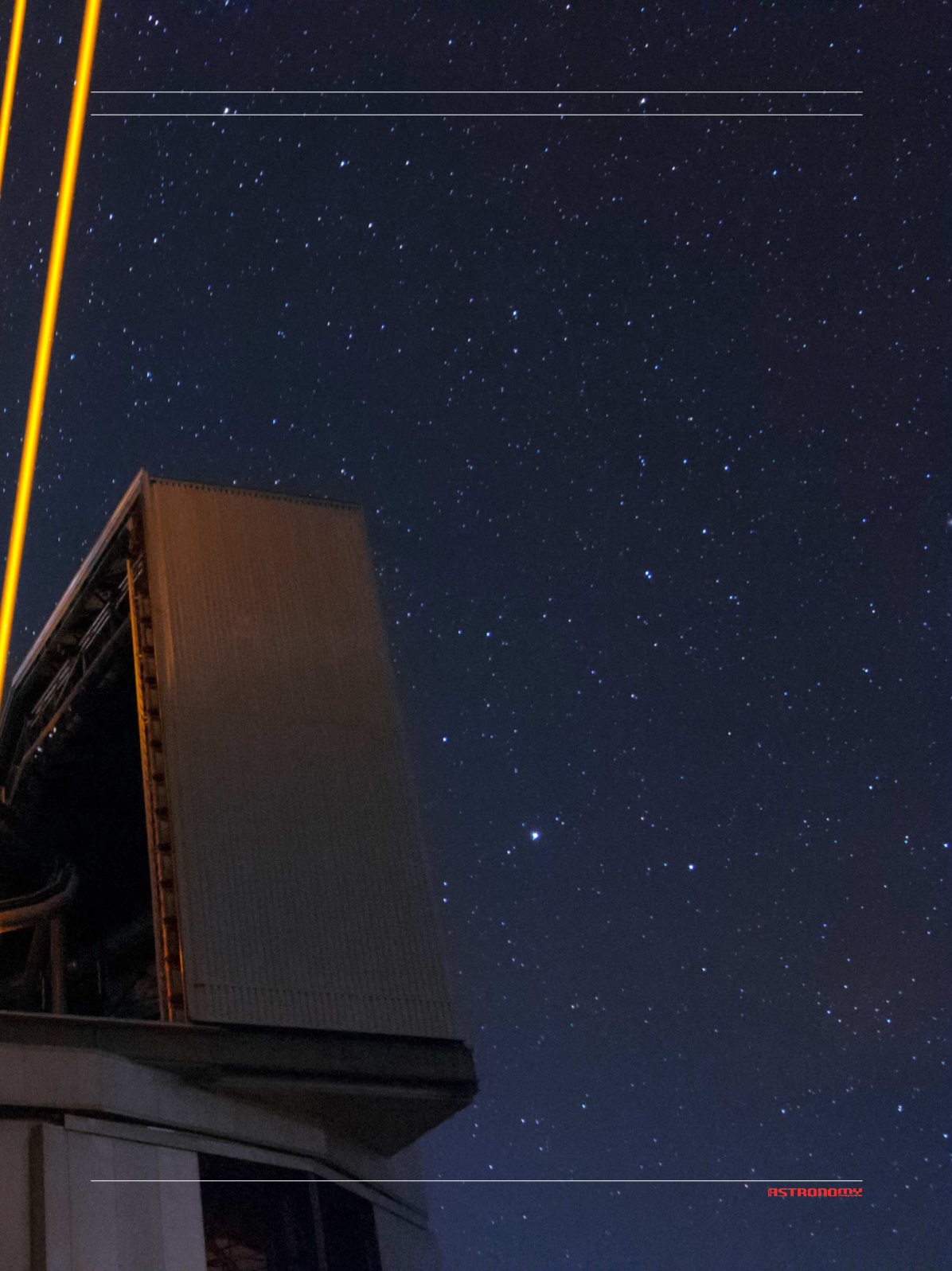

49
SEPTEMBER-OCTOBER 2017
SPACE CHRONICLES
abling MUSE to obtain much sharper
images and resulting in twice the
contrast previously achievable.
MUSE can now study even fainter
objects in the Universe. “Now, even
when the weather conditions are
not perfect, astronomers can still get
superb image quality thanks to the
AOF,” explains Harald Kuntschner,
AOF Project Scientist at ESO.
Following a battery of tests on the
new system, the team of astron-
omers and engineers were re-
warded with a series of spectacular
images. Astronomers were able to
observe the planetary nebulae IC
4406, located in the constellation
Lupus (The Wolf), and NGC 6369, lo-
cated in the constellation Ophi-
uchus (The Serpent Bearer).
The MUSE observations using the
AOF showed dramatic improve-
ments in the sharpness of the im-
ages, revealing never before seen
shell structures in IC 4406.
The AOF, which made these obser-
vations possible, is composed of
many parts working together. They
include the Four Laser Guide Star
Facility (4LGSF) and the very thin
deformable secondary mirror of
UT4. The 4LGSF shines four 22-watt
laser beams into the sky to make
sodium atoms in the upper atmo-
sphere glow, producing spots of
light on the sky that mimic stars.
Sensors in the adaptive optics mod-
ule GALACSI (Ground Atmospheric
Layer Adaptive Corrector for Spec-
troscopic Imaging) use these artifi-
cial guide stars to determine the
atmospheric conditions.
One thousand times per second, the
AOF system calculates the correc-
tion that must be applied to change
the shape of the telescope’s de-
formable secondary mirror to com-
pensate for atmospheric disturb-
ances. In particular, GALACSI cor-
rects for the turbulence in the layer
of atmosphere up to one kilometre
above the telescope. Depending on
the conditions, atmospheric turbu-
lence can vary with altitude, but
studies have shown that the major-
ity of atmospheric disturbance oc-
curs in this “ground layer” of the
atmosphere.
“The AOF system is essentially equi-
valent to raising the VLT about 900
metres higher in the air, above
the most turbulent layer of atmo-
sphere,”
explains Robin Arsenault,
AOF Project Manager.
“In the past,
if we wanted sharper images, we
would have had to find a better site
or use a space telescope — but now
with the AOF, we can create much
better conditions right where we
are, for a fraction of the cost!”
The corrections applied by the AOF
rapidly and continuously improve
















